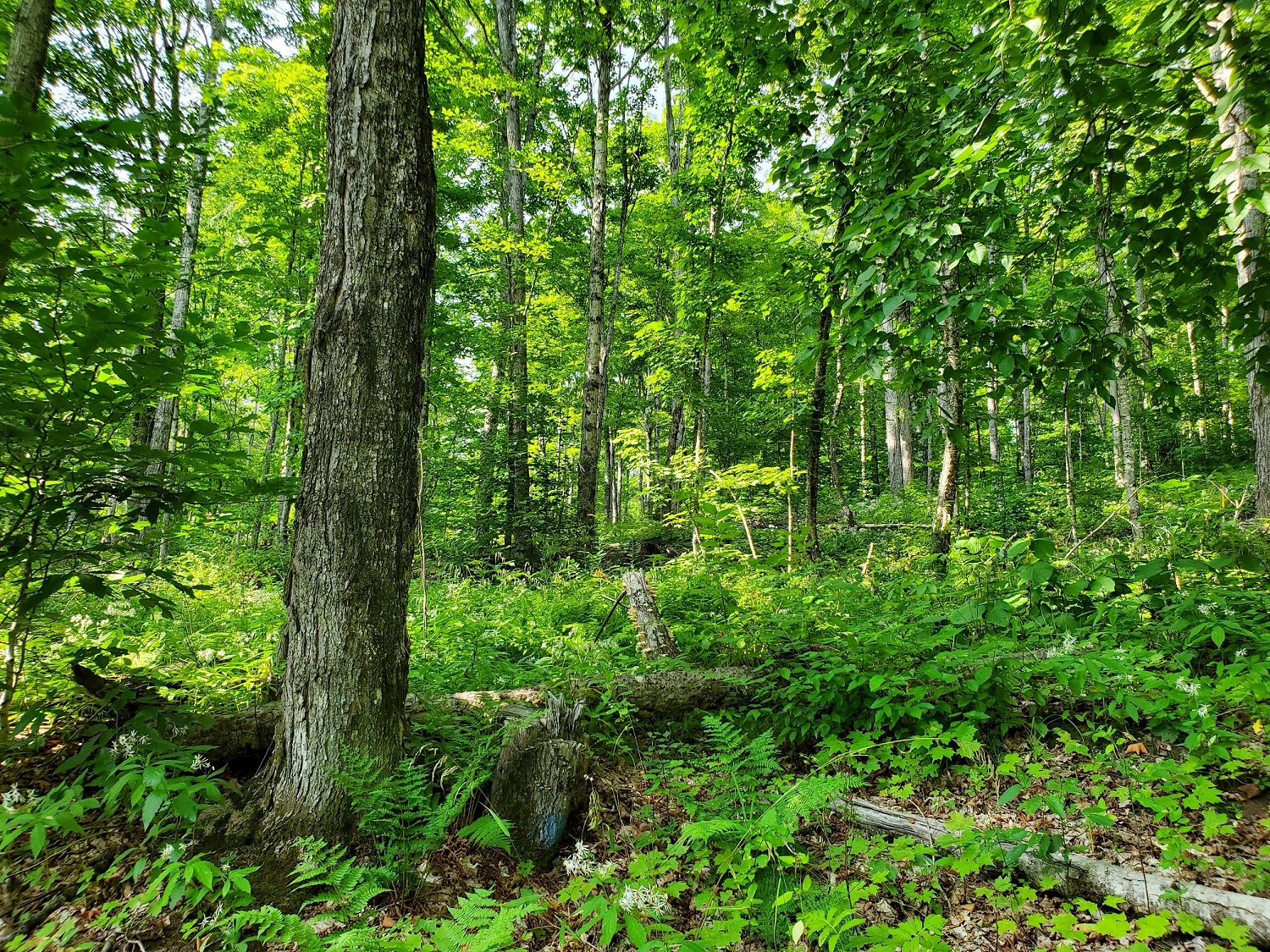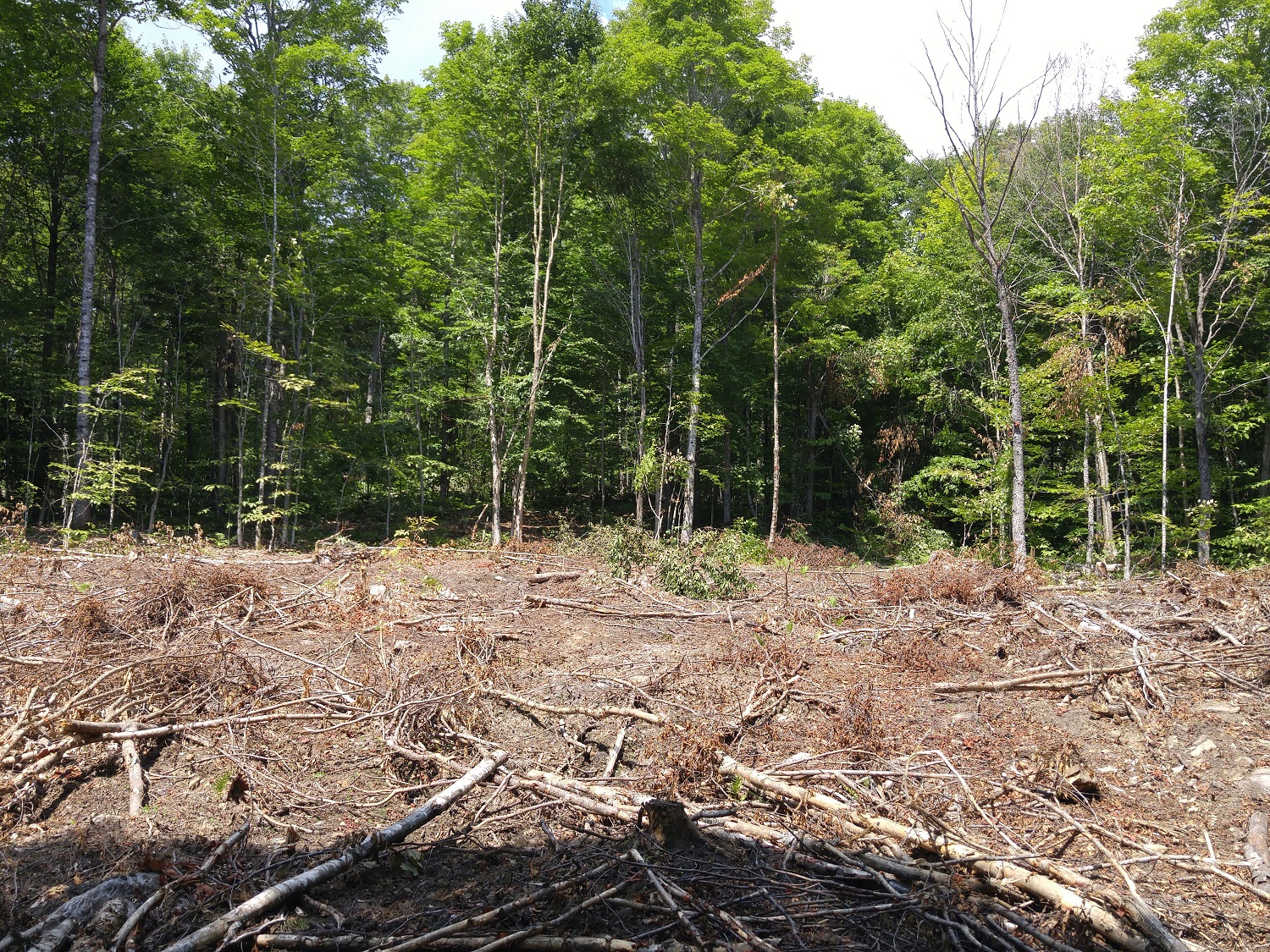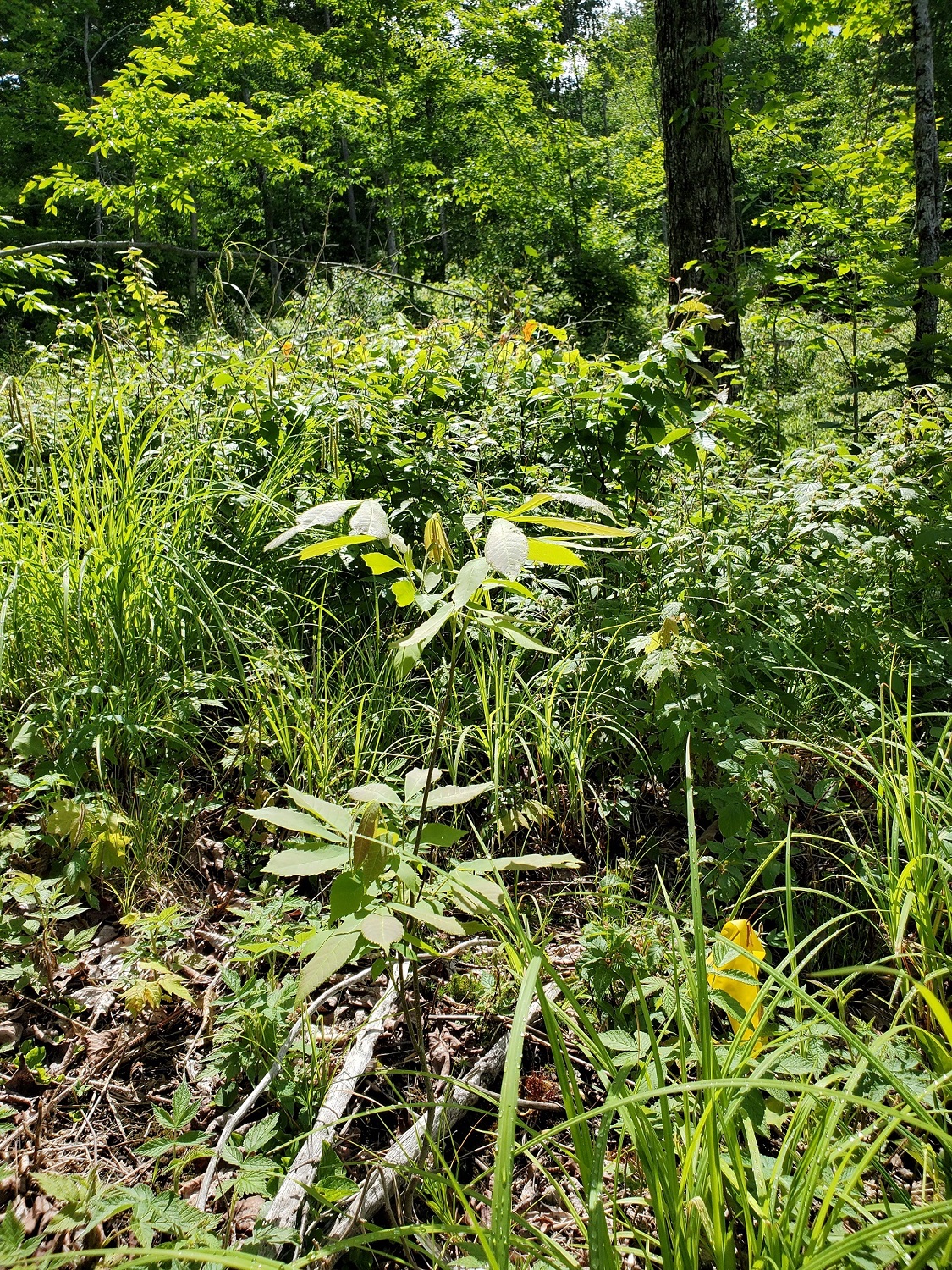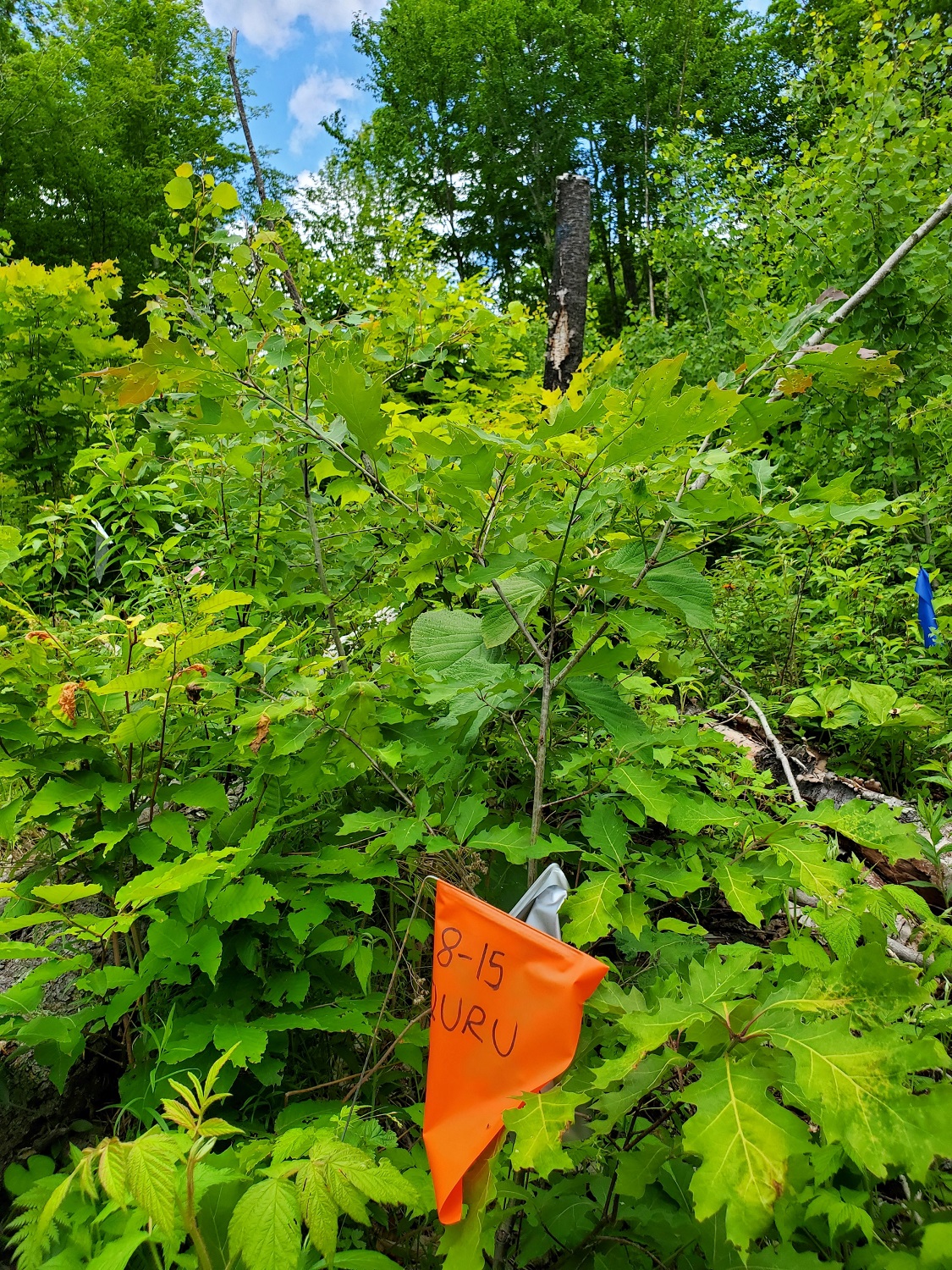Submission information
Adaptive Silviculture for Climate Change (Second College Grant, New Hampshire)
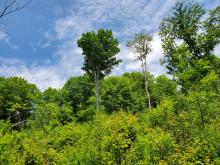
Test silvicultural systems that adapt northern hardwood forests to anticipated changes in climate and disturbance regimes.
Site Location
Second College Grant, New Hampshire
Dartmouth College Second College Grant
Dartmouth College
Stand Information
400 acres
Northern Hardwoods
Understory reinitiation
NA
Coarse, loamy, glacially-derived tills: Tunbridge-Plaisted- Lyman Complex (31%), Peru Fine Sandy Loam (28%), Tunbridge-Berkshire-Lyman Complex (10%), Tunbridge-Lyman Rock Outcrop Complex (22%), Other (9%)
Pre-treatment Conditions
60 - Sugar maple
Four treatment blocks comprise the experimental area across two sites on the property. Both sites are two-aged in structure with an average basal area of 108 ft2/ac. The sites have above average deadwood amounts for this forest type (~24 snags/ac, 458 ft3/ac coarse woody material) and contain an intact litter/duff layer.
The stands are predominantly composed of rich, mesic northern hardwoods dominated by sugar maple, American beech and yellow birch with minor components of red maple, red spruce, quaking aspen and other species.
Acer saccharum (sugar maple)
46.5%
Fagus grandifolia (American beech)
22.5%
Betula alleghaniensis (yellow birch)
18.5%
Silviculture Prescription
Test silvicultural systems that adapt northern hardwood forests to anticipated changes in climate and disturbance regime.
To test silvicultural systems that demonstrate adaptive approaches for anticipated changes in climate and disturbance regime. The adaptive approaches are categorized as Resistance, Resilience and Transition treatments and a Control. Resistance: To maintain relatively unchanged composition and structure conditions over time and encourage the development of a continuous canopy, multi-aged and multi-layered structure. Resilience: To create and maintain compositional and structural complexity to allow for multiple pathways to recovery following disturbance and preserve native, future-adapted species currently present. Transition: To create and maintain compositional and structural complexity composed primarily of future-adapted species that are already present or projected to have suitable future habitat in order to facilitate change and encourage adaptive responses. Control: No harvest or other treatments, allowing for natural succession to take place without management. These stands serve as a reference condition to the other harvested treatments.
Promote climate adaptation through silvicultural prescriptions in Northern Hardwood Forests in Northern New Hampshire.
Resistance Treatment: A single tree selection treatment that removes trees across all size classes and species to maintain a BA of 70-80 ft2/ac. Small groups of 2-3 trees may be removed occasionally to encourage yellow birch and red spruce regeneration. Slash will be left on site (limbing done in forest) to alleviate overland flow and minimize erosion. Summer harvesting is favored to achieve incidental scarification that promotes the establishment of light-seeded species (yellow birch). Cutting cycle length of 20 years. Resilience Treatment: A group selection approach that converts 20% of the treatment area to gaps (.1-.25 ac), leaves 20% in reserves and lightly thins the remaining matrix to a BA of 70-80 ft2/ac. Gaps are to be anchored on yellow birch and cone-producing red spruce, or in areas with high red spruce advance regeneration. Matrix areas will be marked for quality and longevity, resistant beech, resistant crown forms, and all red spruce will be retained. To recruit dead wood, large (>14in DBH), low-quality/cull trees will be left or whole trees contour-felled (beech over maple, BBD-infected beech removed). Slash will be left on site (limbing done in forest) to alleviate overland flow and minimize erosion. Harvests should be done in the summer (cable skidder) to favor incidental scarification that promotes the establishment of light-seeded species (yellow birch) and ideally done in good cone years to promote red spruce regeneration. Additional site prep or follow-up release treatments in gaps may be needed if beech sprouts become a concern post-harvest. Later cuts (cutting cycle length of 20 years) should expand on previous gaps and implement fewer gaps to promote any yellow birch regeneration established following the previous harvest entry. Transition Treatment: An irregular shelterwood and variable density thinning prescription in which 20% of the area is converted to gaps, 60% to thinned matrix (70-80 ft2/ac) and 10-20% left uncut. Gaps will be .25-1 ac in size with a 120-year rotation. Nearby northern hardwood species not currently found on the site and some species that are out of range or of transitional northern hardwood types will be planted in the gaps. Growth form, functional traits such as heat and drought tolerance and wood anatomy will be used to evaluate potential species. Site prep will be done at the time of harvest to clean gaps of beech sprouts and follow-up brush-saw work will be done as needed. To recruit dead wood, 3-5 large, low value trees will be contour felled and 1-3 snags will be left per acre. Cutting cycle length of 20 years, BMPs same as resilience. Control: No harvest or other treatments, allowing for natural succession to take place without management. These stands serve as a reference condition to the other harvested treatments. Silvicultural Systems Utilized: - Single-tree selection - Group selection - Variable density thinning - Irregular shelterwood
- forest health
- species or ecosystem restoration
- invasive species
- climate change
- wildlife habitat
- carbon
Summer 2017: Pre-treatment measurements of vegetation, carbon and wildlife conditions taken along with high-resolution LiDAR data. Late Summer/Fall 2017: Treatments applied according to prescription. Late May-June 2018: Bare root seedlings were obtained from private and state nurseries for eight of the species planted. The hybrid American chestnut (Castanea dentata (Marshall) Borkh. B3F3) species was planted from seed following cold stratification. Seedlings were planted in half of the transition treatment gaps, 8-acre (400 seedlings each) and 8-quarter acre (200 seedling each) gaps overall. Spacing was 2 m and seedlings were randomly designated, with equal species proportions in each gap (n = 40 per 1ac, n = 20 per .25ac). American chestnut was planted at higher density (doubled relative to other seedlings) to account for potential germination failure. Randomly designated protective mesh cages were placed around half of the seedlings to prevent herbivory damage. Species: American chestnut (Fagus grandifolia) bigtooth aspen (Populus grandidentata) bitternut hickory (Carya cordiformis) black birch (Betula nigra) black cherry (Prunus serotina) Eastern hemlock (Tsuga canadensis) Eastern white pine (Pinus strobus) Northern red oak (Quercus rubra) red spruce (Picea rubens) Summer 2018, 2019, 2020: Post treatment data collected on vegetation, carbon, and wildlife conditions. Sensors deployed to track changes in deadwood moisture associated with prescriptions and bird audio recorders set-up. In the summers of 2019 and 2020, competition control treatments were applied to half of the planted seedlings by brush-sawing all competing vegetation within a 1m radius of the seedlings.
Post-treatment
yes
yes
It is still too early to evaluate treatment success, yet data collected thus far suggests potential to meet desired outcomes. The 2019 data reports basal area(ft2/ac) in the control group as 103.2, while resistance, resilience and transition treatments report basal areas(ft2/ac) as 86.3, 84.9 and 76.7, respectively. In addition, trees per acre(TPA) in 2019 reported for the control group(s) is 199, while the resistance, resilience and transition treatments report trees per acre(TPA) as 167, 160 and 160, respectively. Thus, on average, basal area has experienced an approximate 18.5% reduction corresponding to a 17.5% reduction in trees per acre. The lower intensity control and resistance treatments experienced a decline in deadwood volume following the harvests while the resilience and transition treatments show a clear increase From 2017 to 2019: . This pattern is not evident in biomass calculations where only the control showed an increase in coarse woody material biomass. Excluding the control, snag biomass decreased across all treatments following harvest(resistance, 1.42(t/ac); resilience, 1.63(t/ac); transition, 0.89(t/ac)) while stump biomass unsurprisingly increased(resistance, 1.41(t/ac); resilience, 1.52(t/ac); transition, 2.03(t/ac)). Relative to the proportion of live tree biomass, coarse woody material biomass has increased in the resistance and transition treatments. Proportionally, snag biomass has only increased slightly in the resilience treatment relative to live tree biomass and has decreased in all other treatments. Planting Outcomes: While it is still too early to know if the planted seedlings will survive to maturity, over the first three years of growth, approximately 56% of the planted seedlings have survived. Percent survival is notably highest for red spruce(80.2% ±3.9% per 1 ac, 77.5% ±4.7% per 0.25 ac) and northern red oak(79.1% ±3.3% per 1 ac, 79% ±4.9% per 0.25 ac) while far lower for black cherry(39.1% ±2.7% per 1 ac, 39.6% ±7.4% per 0.25 ac), bigtooth aspen(46.9% ±4.8% per 1 ac, 34.4% ±4.2% per 0.25 ac) and black birch(46.7% ±2.6% per 1 ac, 41.3% ±8% per 0.25 ac) . As would be expected from an early successional species, bigtooth aspen is showing the fastest rates of early growth(4g ±0.17g per 1 ac, 3.6g ±0.23g per 0.25 ac) while bitternut hickory is displaying the slowest growth rates(1.1g ±0.04g per 1 ac, 1.2g ±0.05g per 0.25 ac) . All species show potential for continued survival into the future.
Miscellaneous
Resistance Treatment: Repeat single-tree selection treatment 20 years after first harvest. Resilience Treatment: Expand on previous gaps but implement fewer gaps to promote yellow birch regeneration from the last cut. Matrix areas should be reassessed for yellow birch and red spruce regeneration to determine next steps (may require thinning, single-tree selection, etc.). To be implemented 20 years after first harvest, ideally on a good red spruce cone year. Transition Treatment: Repeat variable density thin after 20 years, feather existing gaps.
adaptation silviculture, climate change, northern hardwoods, variable density thinning, irregular shelterwood
yes
Statistics
Contact Information
Anthony D'Amato
Professor and Director, Forestry Program
University of Vermont, Rubenstein School of Environment and Natural Resources
Burlington, Vermont. 05405
United States
Photo credit: Jess Wikle, 2020, Tables and Figures: Jess Wikle and Pete Clark.
Supplementary Content
